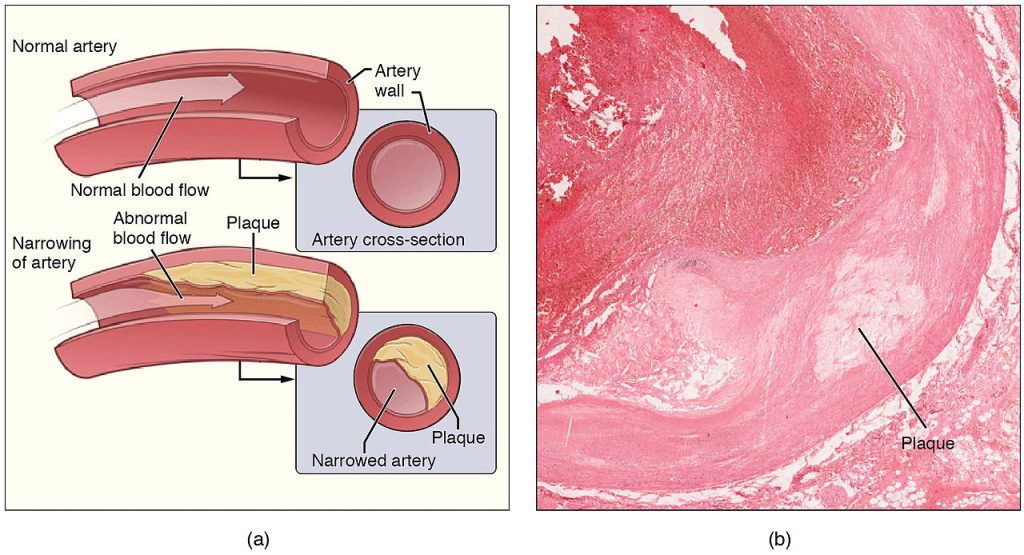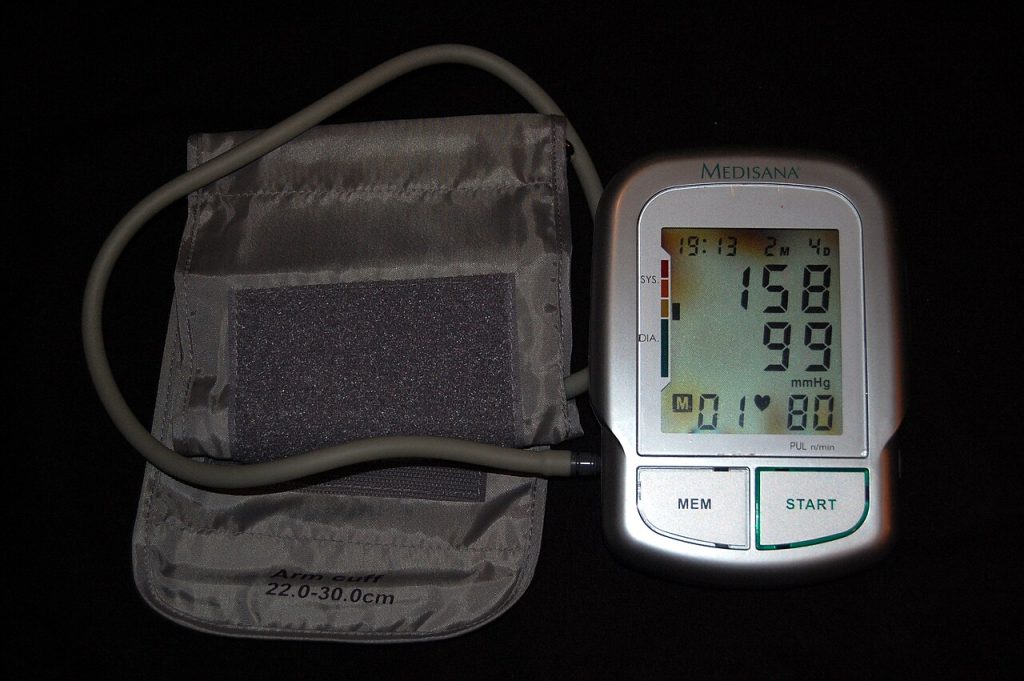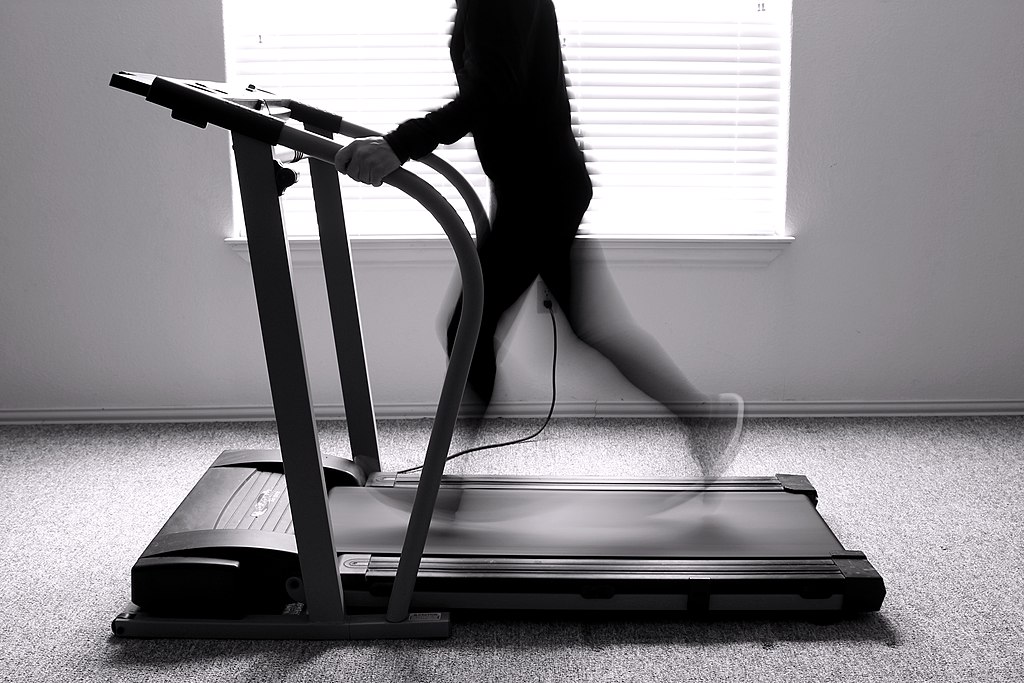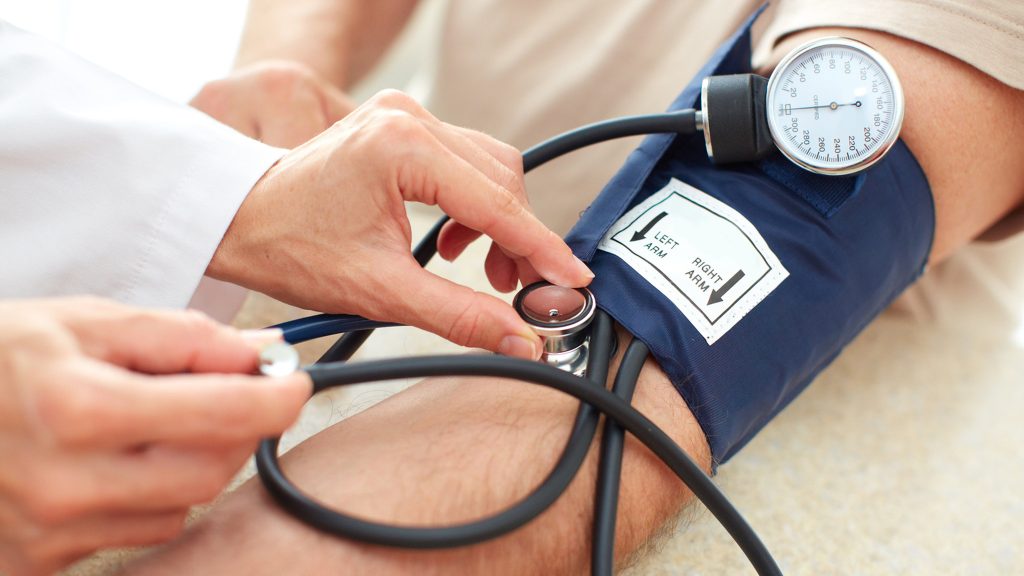Confronting the world’s most prolific killer
According to the World Health Organization, the top two causes of death worldwide are ischemic heart disease and stroke, which are responsible for about 15 million deaths per year. Around half of those deaths can be attributed directly to hypertension, or high blood pressure.
First, science
Before we can understand what high blood pressure is, we need to know what blood pressure is. Your blood is pushed through your veins and arteries by the pumping action of your heart. That pumping action exerts a force on the walls of your blood vessels that can be measured. When your heart beats, the pressure is at its peak and is called systolic1 pressure. Between heart beats, the pressure is at its lowest and is called diastolic2 pressure. These two numbers together (measured in millimeters of mercury3, or mmHg), comprise your blood pressure.
A normal blood pressure is below 120/80 mmHg. If your numbers start to go above this, you need to start taking action, because the consequences of high blood pressure can be very dire.
| Blood pressure category | Systolic pressure | and/or | Diastolic pressure |
| Normal | <120 mmHg | and | <80 mmHg |
| Elevated | 120–129 mmHg | and | <80 mmHg |
| Hypertension Stage 1 | 130–139 mmHg | or | 80–89 mmHg |
| Hypertension Stage 2 | >140 mmHg | or | >90 mmHg |
| Hypertensive Crisis | >180 mmHg | and/or | >120 mmHg |
The silent risks of hypertension
Healthy blood vessels have smooth interiors and have a bit of give to them. Too much pressure can damage the arterial lining (endothelium4). These damaged sections of blood vessel can start to accumulate fatty plaques that constrict blood flow and lead to stiffening. This is called atherosclerosis5 and, left unchecked, it can kill you.
Atherosclerosis is legit scary
When your arteries are damaged, white blood cells (WBCs) show up to try and fix the damage and enter the cell lining of the blood vessel. The WBCs transform into macrophages (another type of WBC) that consume cholesterol-laden low-density lipoprotein (LDL) molecules. What’s left are fatty streaks on your arterial walls.
These fatty streaks accumulate under the endothelium and become necrotic (composed of dead cells) and covered with a fibrous shell. Your body will try to address this by making the artery bigger, but there’s only so much it can do. Calcium will begin to build up between the arterial wall and the plaque, making the artery stiffer. At this stage you will have developed fibroatheroma.
If the fibrous cap surrounding the arterial plaque were to break, it would expose the necrotic core to the blood stream, triggering a clotting response. A blood clot forming in a blood vessel (thrombosis6) can clog your arteries (embolism7), cutting off blood supply to your brain (stroke8), heart (heart attack), limbs (ischemia9), or other organs.

Hypertension puts your heart at risk
High blood pressure causes your heart to work harder. When muscles work harder, they get bigger. In the case of hypertension, most of that growth is concentrated in the left ventricle (LV) of the heart which is responsible for pumping blood into the aorta, the body’s primary artery. In addition to this growth in response to extra work, the walls of the LV get thicker in due to the added stress of the higher blood pressure. The combination of these two factors leads to an enlarged LV and a condition called left ventricular hypertorophy10 (LVH), which is bad for a few reasons.
- LVH can lead to diastolic dysfunction, a condition where the lower chambers of the heart (ventricles) have trouble relaxing, preventing them from properly filling with blood.
- LVH can lead to coronary artery atherosclerosis, a condition where plaques build up in the arteries that supply the heart with oxygen and nutrients. Clogged coronary arteries can lead to the heart being unable to pump enough blood (congestive heart failure) or prevent it from getting the oxygen it needs to survive (ischemic heart disease).
If you think LVH is bad, we’re just getting started.
- Coronary artery atherosclerosis, or coronary artery disease (CAD) can cause chest pain (angina11) which arises from the lack of oxygen.
- Over time, reduced oxygen delivery and impaired diastolic function can cause scarring on the heart’s tissue, leading to systolic dysfunction, the counterpart to diastolic dysfunction, where your heart has difficulty contracting properly.
- As the heart’s ability to pump blood decreases, some of that blood remains in the veins in the lungs. The added pressure of the stuck blood forces extravascular fluid into the air sacs (alveoli12) of the lungs (pulmonary edema13), limiting the amount of oxygen the body can breathe in, leading to shortness of breath (dyspnea14).
- Finally, when the blood flow to the heart is completely blocked, it leads to a heart attack (myocardial infarction15).
Hypertension puts your brain at risk
The biggest risk to your brain from hypertension comes from ischemic stroke, or a blockage in one of your brain’s arteries, leading to the death of brain cells. The parts of the brain that don’t receive blood will begin to die. According to the research journal Stroke, stroke victims will lose 1.9 million neurons for every minute they are untreated.
Even if blood flow isn’t completely blocked, the reduced supply of oxygen could also lead to vascular dementia, which is characterized by a loss of reasoning and judgement. There is no cure for vascular dementia, only management options.

Hypertension puts your body at risk
Hypertension is a systemic threat to your body; the damage it causes can affect all of your bodily systems. If high blood pressure damages the blood vessels in your eyes, you could go blind. If it damages the blood vessels leading to your kidneys, your kidneys could shut down leading to life-long dialysis. There is no part of your body that is immune from the ravages of hypertension.
How to prevent and manage hypertension
In order to prevent or manage hypertension, you have to know you have it. One of the most insidious things about high blood pressure is its lack of symptoms. There’s no chest pain, no headache, no dizziness. The only way to know if your blood pressure is too high is to measure it regularly.
I use a $40 Omron blood pressure monitor, but there are both cheaper and more expensive options out there.
If you do have high blood pressure, your doctor is the first person who should know, but there are lots of things you can do now to lower or control your blood pressure.
Exercise and weight loss
Losing weight and exercising are at the top of most lists when it comes to managing blood pressure. Body weight and blood pressure have been known to be related for years. The relationship is simple: lose weight to lower high blood pressure.
The connection between lowering high blood pressure and exercise is pretty simple. The Mayo Clinic sums it up nicely:
How are high blood pressure and exercise connected? Regular physical activity makes your heart stronger. A stronger heart can pump more blood with less effort. If your heart can work less to pump, the force on your arteries decreases, lowering your blood pressure.

It doesn’t matter what exercise you do. According to the Arquivos Brasileiros de Cardiologia (Brazilian Cardiology Archives), all exercise will lower your blood pressure in the time following your exercise, but jogging has the greatest effect. Exercise is an effective tool not just for treating high blood pressure, but for preventing it as well.
Diet
Reducing salt is on every list of how to manage hypertension. This is because salt (specifically sodium) interferes with your kidney’s ability to remove water, leaving extra fluid in your circulatory system, straining your heart. Salt plays such a significant role in hypertension that the journal Hypertension says:
To prevent and control the ongoing epidemic of prehypertension and hypertension, major reductions are needed in the salt content of the food supply.
The European Journal of Nutrition finds that upping our calcium intake can also play a role in reducing blood pressure. According to the American Journal of Hypertension, eating fruits and vegetables helps lower blood pressure as well. The National Institutes of Health (NIH) has even promoted a diet designed to manage blood pressure called the DASH Diet (Dietary Approaches to Stop Hypertension).
Temperance
As enjoyable as your vices are, they are probably contributing to raising your blood pressure. The number one contributors are cigarettes. Nicotine is the primary culprit, being responsible for increased heart rate and increased blood pressure. The journal Internal and Emergency Medicine found that quitting smoking for a sufficient time reduces blood pressure.

Drinking excessively can also lead to both short-term and long-term rises in blood pressure. Alcohol is calorie dense as well so it can contribute to weight gain which further exacerbates your blood pressure. Fortunately, most of the hypertensive effects of alcohol dissipate when intake levels are reduced to moderate levels or cut out all together.
When it comes to caffeine and marijuana, the jury is still out. The research is contradictory, therefore it’s not responsible to make a claim one way or the other on the effect these drugs have on heart health.
Chill out
Although there’s no link to stress and long-term changes in blood pressure, stress can cause short-term spikes in blood pressure and constriction to your arteries. If you react to stress by drinking or smoking, the effect can be compounded. Unfortunately there’s no cure-all solution to stress, but losing weight, eating healthy, and working out, are all known to have a beneficial effect on stress levels. Plus, getting your blood pressure under control means you have one less thing to worry about.
- systolic is the adjectival form of the word systole (/ˈsɪstəli/) and comes from the Greek word συστολή (sustolḗ), which means contraction. ↩︎
- diastolic is the adjectival form of the word diastole (/daɪˈæstəli/) and comes from the Greek word διαστολή (diastolḗ), which means dilation. Both systole and diastole share the same Greek root στέλλω (stéllō), which means to send or to make ready. The prefix σύν (sún) means together, while διά (diá) means apart. ↩︎
- millimeters of mercury is one of the oldest units of pressure measurement and represents the “extra pressure generated by a column of mercury 1 mm high.” ↩︎
- endothelium is derived from the Greek words ἔνδον (éndon), meaning inner, and θηλή (thēlḗ), meaning nipple. To understand the why of “nipple,” take a look at this answer on english.StackExchange.com. ↩︎
- atherosclerosis comes from the Greek words ἀθᾰ́ρη (athárē), which means gruel or porridge, and σκλήρωσῐς (sklḗrōsis), which means hard. ↩︎
- thrombosis is the Greek word for a blood clot, θρόμβος (thrómbos). ↩︎
- an embolism is the condition caused by an embolus, which derives from the Greek word ἔμβολος (émbolos), which means peg or stopper. ↩︎
- stroke is a translation of apoplexy, the word originally used for the condition. It is used not in the sense of a caress, but rather a strike of violence. Incidentally, apoplexy is a Greek word (ἀποπλήσσω [apoplḗssō]) that means to cripple with a strike. ↩︎
- ischemia comes from the Greek words ῐ̓́σχω (ískhō), which means to hold back or to stop, and αἷμᾰ (haîma), which means blood. ↩︎
- hypertrophy refers to the increase in size of an organ due to the enlargement of its cells. It comes from the Greek words ὑπέρ (húper), which means over or beyond, and τροφή (trophḗ) which means food or nourish. ↩︎
- angina is a shortened form of angina pectoris. The word angina derives from the Greek word ἀγχόνη (ankhónē) which means torment or strangling and originally referred to a throat infection. The word pectoris is from the Latin word pectus and means chest. ↩︎
- alveoli is the plural of alveolus which is a Latin word that means small cavity. The alveolus is where oxygen and carbon dioxide are transferred to and from the blood. ↩︎
- pulmonary means relating to the lungs and comes from the Latin word pulmōnārius which is made from the word pulmo, which means lung, and -arius, an adjective-forming suffix. edema is derived from the Greek word οἴδημα (oídēmă) which means swelling. ↩︎
- dyspnea comes from the Greek prefix δῠσ- (dus-), which means bad or hard, and the word πνέω (pnéō), which means to breathe. ↩︎
- myocardial is the adjectival form of myocardium, which means heart muscle (μῦς [mûs] and κᾰρδῐ́ᾱ [kardíā]); an infarction is when tissue is cut off from its blood supply, leading to tissue death, but the word comes from the Latin infercio which means to cram or to stuff up. It refers not to the dead tissue, but rather the blockage that caused the tissue death. ↩︎

